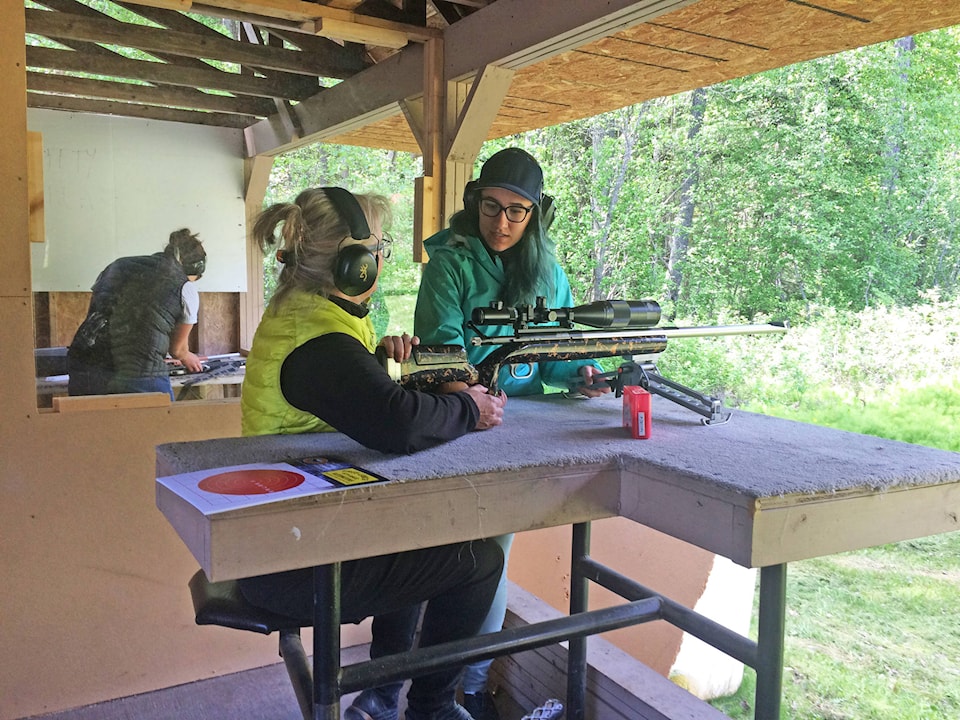The Bulkley Valley Rod and Gun Club (BVRGC) believes a new ban on “assault style” rifles will negatively impact legitimate gun owners and gun clubs while doing nothing to reduce gun violence in Canada.
“There’s all sorts of emotion around the use of firearms by those who use them illegally, as there should be,” said Brian Atherton, past-president, speaking on behalf of the club. “We don’t want to see it, no rod and gun clubs want to see it, the Canadian public doesn’t want to see it and we want to see measures taken that are effective to reduce violence surrounding firearms.”
But the banning of 1,500 models of semi-automatic rifles announced May 1 by the federal government is not the right measure, he said.
Atherton points to data from Statistics Canada (StatCan) that shows from 2014 to 2018 (the last five years for which data is available) there was an average of 215 murders involving firearms in Canada. Of those only 48 (22 per cent) were committed with rifles or shotguns of any kind (the data does not distinguish between style or function).
Taking the emotion out of it, Atherton said, the statistics are indicative that violence with long guns, particularly mass shootings such as the recent killings in Nova Scotia, is exceedingly rare.
By comparison with other countries Canada is about in the middle of the pack at 0.75 firearms-related murders per 100,000 population (2017).
Atherton said he doesn’t want to diminish that violence, but believes the government should look elsewhere from legal gun owners for a solution, especially, he said, since most of the guns used in crimes are smuggled into Canada illegally from the United States.
“We’re beside the longest undefended border in the world that has a significantly different culture on both sides of the border,” he said, adding this makes our situation very different from Australia and New Zealand where bans appear to have been very successful.
“Are we going to ban firearms from law-abiding people and all of a sudden some magic is going to happen? Well, I don’t know, but Australia is an island, New Zealand is an island; if they choose to ban something they have a pretty good safe bet the proliferation of illegal firearms is going to go down. Well, in Canada the illegal proliferation of firearms is not going to go down.”
It is exceedingly difficult to verify that assertion because no data is available on the source of crime guns, but the Canada Border Agency did seize some 650 firearms at the border last year and the RCMP confirmed the Nova Scotia shooter had obtained the weapons he used illegally in Canada and from American sources.
Atherton also noted the man who killed 22 people in Nova Scotia last month had a known history of domestic violence.
“One of the things the firearms community looks at is, why don’t we blame the perpetrator, the person that committed the act, and not the tool that was used to commit the act?” he said.
“How about we get down to the root cause, how about we spend a billion dollars to assist people with mental health issues, to assist in poverty-related [issues] or certainly trying to curtail the drug issues that we have in this country?”
Atherton said members of the BVRGC also worry about what is next.
“There’s always a great fear amongst firearms owners, when will the next crazy person do something with whatever and there will be another significant reaction that goes, ‘now we’re looking at banning this’, whatever this is.”
That argument does not carry much weight with gun control advocates who question why it is necessary for anybody to own the kind of semi-automatic weapons covered by the ban.
Prime Minister Justin Trudeau said as much in announcing the new restrictions.
“These weapons were designed for one purpose and one purpose only: to kill the largest number of people in the shortest amount of time,” Trudeau said. “There is no use and no place for such weapons in Canada.”
Atherton disputes that logic.
“There’s all sorts of things we in society don’t need, so who’s to question the validity of whether one needs something or doesn’t need something,” he said. “Do we need motorcycles that’ll do 300 kilometres an hour, there’s lots that do. I don’t want to draw stupid parallels… but why should I be restricted from using something that’s been vetted by the RCMP.
“It’s just a hobby, and it’s a hobby that I’ve enjoyed ever since I was a kid and graduated from throwing rocks at a tin can.”
And that, he said, is the crux of it. Legal gun owners are already heavily regulated in Canada. To get a restricted firearm possession and acquisition licence, people have to go through a rigorous process.
They also must belong to a registered gun club and can only shoot their guns on the club’s range. And that, Atherton said, has the BVRGC concerned about its viability as a club.
If the club fails, he said, it could have another unintended consequence because the RCMP, use the club’s range, would have nowhere to train.
Finally, Atherton noted, while the government is targeting law-abiding gun owners, convicted criminals often walk around free.
As an example, he cited last year’s attempted murder trial of Ron Fowler in Smithers.
“I was blown away,” he said, “When he was found guilty of attempted murder, with a firearm, he was released on conditions [pending sentencing].
“This is what always frustrates me, do we need more laws, do we need more restrictions, or do we need to enforce the laws that we have?”
